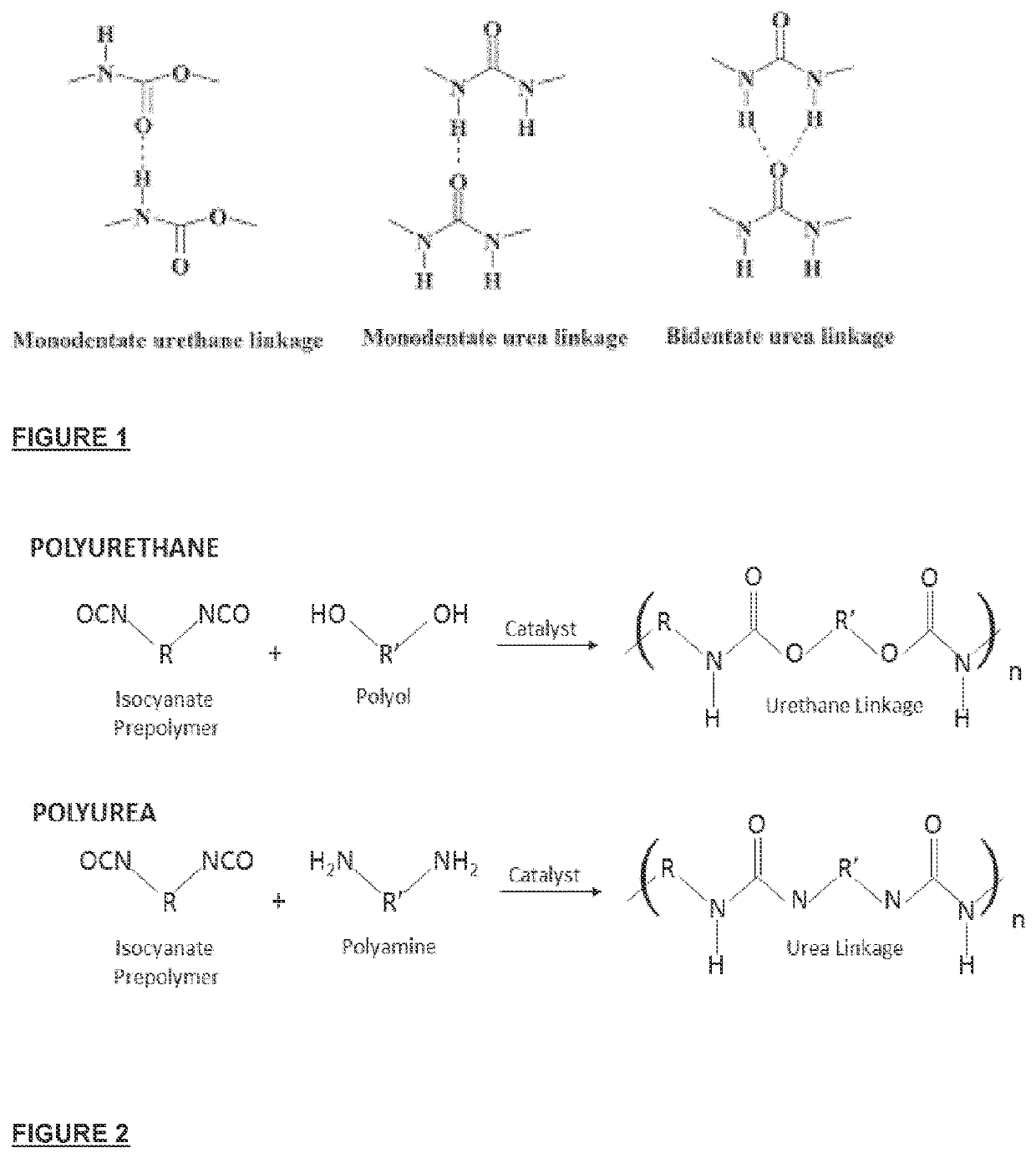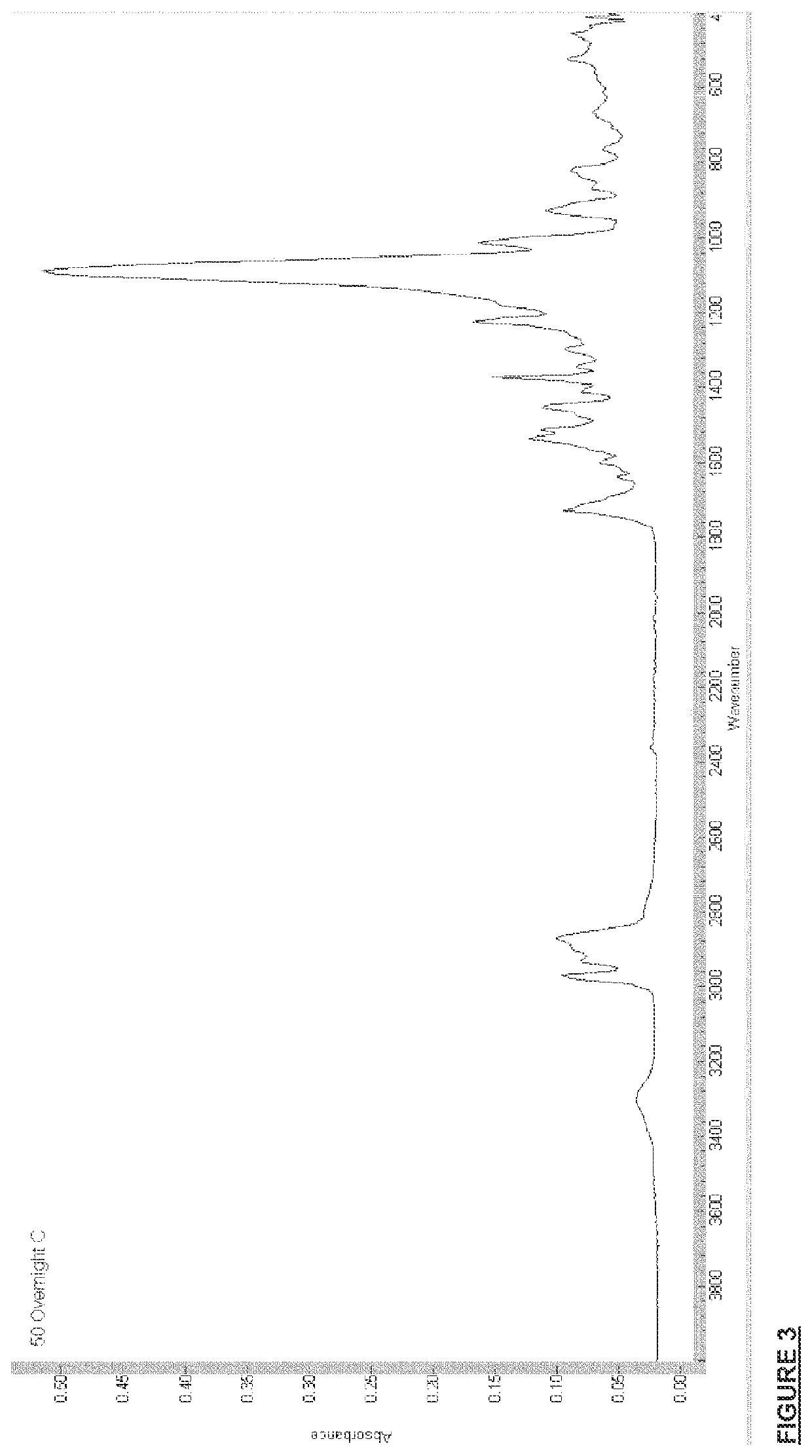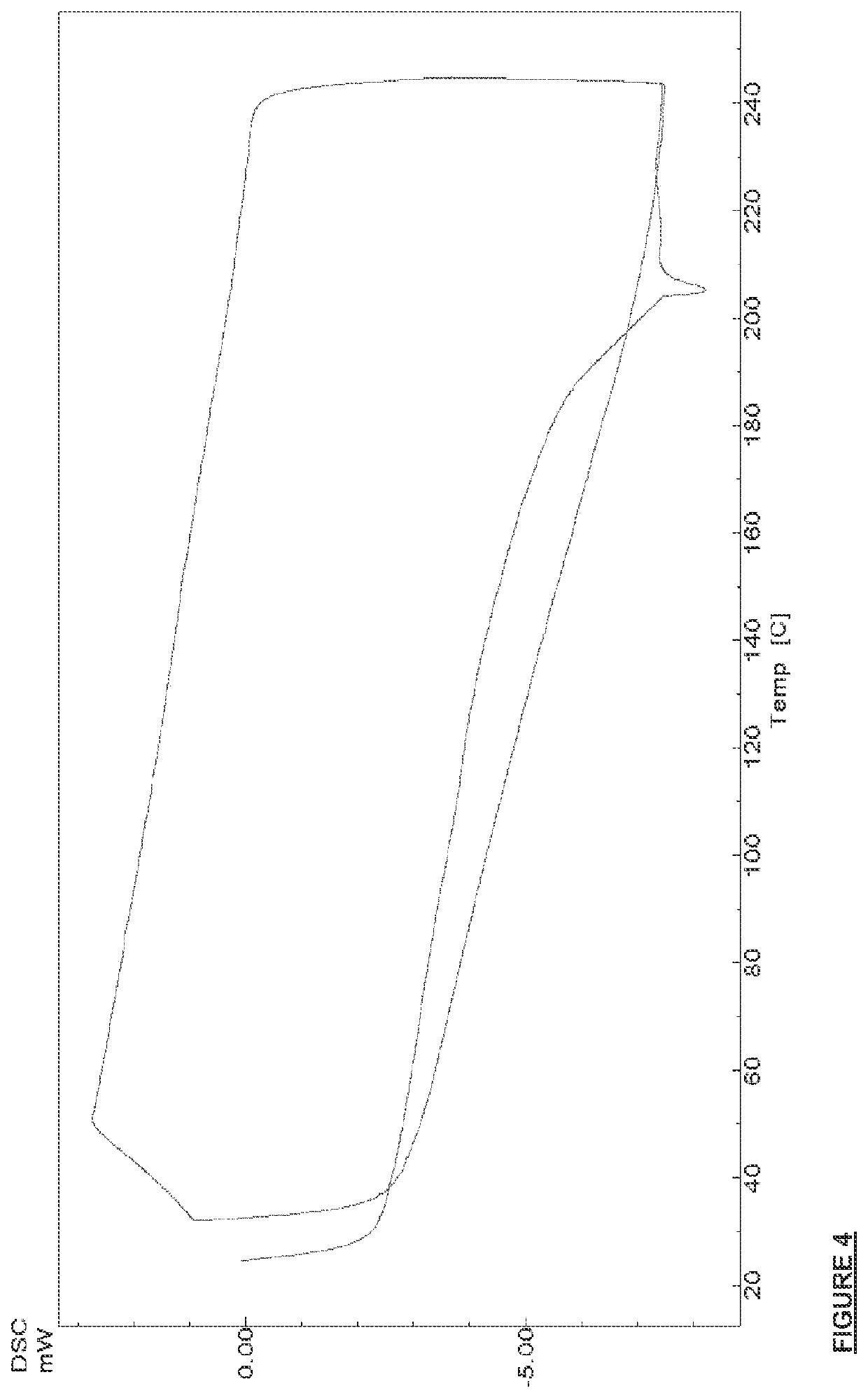Implantable biomaterial, and method of manufacturing thereof
a biomaterial and implantable technology, applied in the field of implantable biomaterials, can solve the problems of reducing the ability of the material to be melted, weakening the mechanical properties of the polymer, etc., and achieve the effects of improving biocompatibility, increasing material strength, and maintaining strength and fatigue resistan
- Summary
- Abstract
- Description
- Claims
- Application Information
AI Technical Summary
Benefits of technology
Problems solved by technology
Method used
Image
Examples
example 1
[0113]A formulation using the following recipe has been created
[0114]2 equivalent weights of 2,4-toluene diisocyanate
[0115]1 equivalent weight of 2300 g / mol poly(propylene glycol)
[0116]0.5 equivalent weight p-phenylene diamine (chain extender)
[0117]0.5 equivalent weight of benzene-1,4-diol (chain extender)
[0118]3% zinc neodecanoate catalyst
[0119]The following weighing, mixing, and evaporation steps are to be performed in a chemical safety cabinet:
[0120]In a glass beaker with magnetic stir rod the following are combined: 0.03 g zinc neodecanoate (Shepherd Mirecourt 1364), 0.14 g benzene-1,4-diol (Sigma H17902), and 0.13 g p-phenylene diamine (Sigma 78429). To this beaker 25 ml of acetone is added and the mixture is stirred at ambient temperature on a magnetic stir plate with magnetic stir rod at a speed of 200 RPM for 15 minutes until all contents have become miscible in acetone solution. In a separate glass beaker, 6.18 g of polypropylene glycol toluene-2,4-diisocyanate (PPG-TDI) (S...
example 2
[0124]A formulation using the following constituent parts has been created
[0125]2 equivalent weights of 2,4-toluene diisocyanate
[0126]1 equivalent weight of 2300 g / mol poly(propylene glycol)
[0127]1 equivalent weight Ethanolamine (chain extender)
[0128]3% zinc neodecanoate catalyst
[0129]The following weighing, mixing, and evaporation steps are to be performed in a chemical safety cabinet:
[0130]In a glass beaker with magnetic stir rod the following are combined: 0.0321 g zinc neodecanoate (Shepherd Mirecourt 1364) and 0.1531 ml Ethanolamine (Sigma 411000-100ML). To this beaker 10 ml of acetone is added and the mixture is stirred at ambient temperature on a magnetic stir plate at a speed of 200 RPM for 5 minutes until all contents have become miscible in acetone solution. In a separate glass beaker, 6.20 g of polypropylene glycol toluene-2,4-diisocyanate (PPG-TDI) (Sigma 433497) pre-polymer is measured. The contents of the beaker containing the chain extender are transferred to the beak...
example 3
[0131]A formulation using the following constituent parts has been created
[0132]2 equivalent weights of 2,4-toluene diisocyanate
[0133]1 equivalent weight of 2300 g / mol poly(propylene glycol)
[0134]1 equivalent weight p-phenylene diamine (chain extender)
[0135]3% zinc neodecanoate catalyst
[0136]The following weighing, mixing, and evaporation steps are to be performed in a chemical safety cabinet:
[0137]In a glass beaker with magnetic stir rod the following are combined: 0.0321 g zinc neodecanoate (Shepherd Mirecourt 1364), and 0.2702 p-phenylene diamine (Sigma 78429). To this beaker 25 ml of acetone is added and the mixture is stirred at ambient temperature on a magnetic stir plate at a speed of 200 RPM for 15 minutes until all contents have become miscible in acetone solution. In a separate glass beaker, 6.18 g of polypropylene glycol toluene-2,4-diisocyanate (PPG-TDI) (Sigma 433497) pre-polymer is measured. The contents of the beaker containing the chain extender are transferred to th...
PUM
| Property | Measurement | Unit |
|---|---|---|
| elastic modulus | aaaaa | aaaaa |
| elastic modulus | aaaaa | aaaaa |
| mouldable | aaaaa | aaaaa |
Abstract
Description
Claims
Application Information
 Login to View More
Login to View More - R&D
- Intellectual Property
- Life Sciences
- Materials
- Tech Scout
- Unparalleled Data Quality
- Higher Quality Content
- 60% Fewer Hallucinations
Browse by: Latest US Patents, China's latest patents, Technical Efficacy Thesaurus, Application Domain, Technology Topic, Popular Technical Reports.
© 2025 PatSnap. All rights reserved.Legal|Privacy policy|Modern Slavery Act Transparency Statement|Sitemap|About US| Contact US: help@patsnap.com



